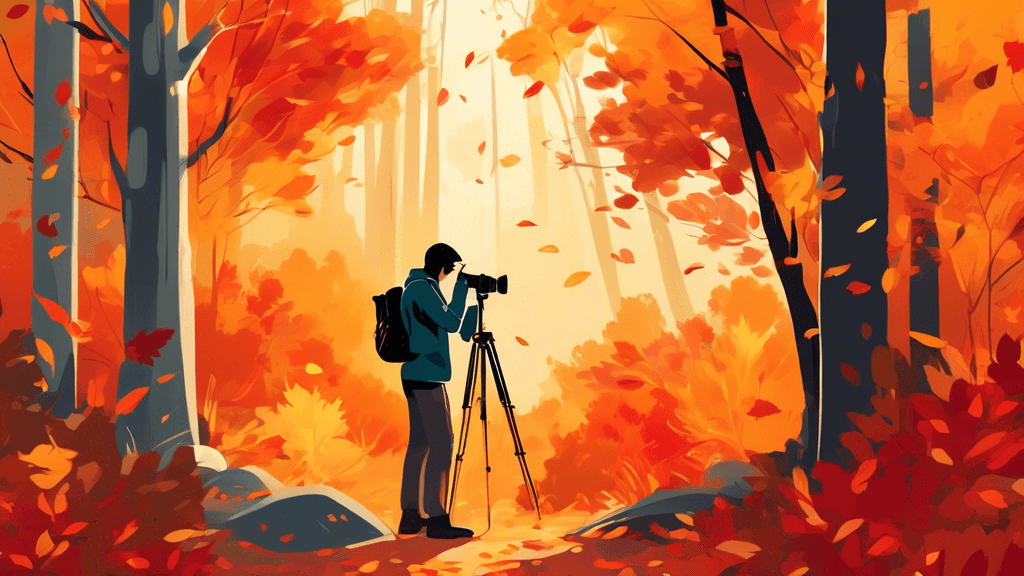
Capturing Autumn: A Guide to Photographing Fall's Colorful Foliage
Share
The Art and Science of Photographing Autumn's Colorful Foliage
Autumn transforms our natural landscapes into a stunning palette of reds, yellows, and oranges. For photographers, amateur and professional alike, this season offers a unique opportunity to capture the essence of change and the beauty of decay. But what makes a photograph of autumn foliage stand out? Let's delve into the techniques, timing, and artistic considerations that can help you capture the splendor of fall.
Understanding the Science Behind Autumn Colors
Before setting out with your camera, it's crucial to understand what you're photographing. The vivid colors of fall foliage are the result of chemical processes that occur as the days shorten and temperatures drop. Chlorophyll, which gives leaves their green color, breaks down, exposing the underlying yellow and orange pigments (carotenoids). Meanwhile, cooler temperatures and bright sunlight encourage the production of anthocyanins, compounds that give leaves their red and purple hues.
Key data to remember:
- Chlorophyll breaks down due to reduced sunlight and temperature, revealing carotenoids.
- Anthocyanins are produced more in response to bright sunlight and cool temperatures.
- Peak color intensity in leaves occurs when these processes are in balance.
Best Time and Places to Capture Autumn Foliage
Timing is everything when it comes to fall photography. The peak color time in any given area can last as little as a few days, depending on weather conditions. Frost, heavy winds, and rain can rapidly strip trees of their colorful leaves.
To ensure you don’t miss out, follow local foliage reports and plan your photographic excursions accordingly. Typically, northern regions experience peak foliage earlier than southern areas. Higher elevations also see earlier color changes than lower ones.
Photographing early in the morning or late in the afternoon can provide the most striking light. The low angle of the sun illuminates the leaves more intensely and the soft light enhances the warm tones. Furthermore, the early hours are often windless, ensuring that your subjects are still.
Technical Tips for Stunning Autumn Photography
How do you translate the awe of autumnal scenes into compelling photographs? Here are several technical tips to consider:
- Lens choice: While a good standard zoom lens can cover most situations, consider a polarizing filter to enhance the vividness of the sky and foliage by reducing glare and increasing color saturation.
- Aperture settings: Utilize a small aperture (high f-number) to maximize depth of field, keeping the entire scene in focus from foreground to background.
- Shutter speed: A faster shutter speed may be needed to capture leaves rustling in the breeze without blur, unless capturing movement is part of your creative vision.
- ISO settings: Keep the ISO as low as possible to reduce noise but adjust according to the available light, especially in shaded areas or during cloudier days.
Artistic Considerations: Composition and Perspective
With technical settings accounted for, turn your focus to the artistic aspects of your photography. Composition is paramount in transforming a simple photo into a story. Incorporate elements such as rivers, lakes, or hiking trails to guide the eye through the image. Layering these features can add depth and interest, engaging viewers more profoundly.
Perspective can also dramatically change how autumn colors are perceived. Try capturing images from different angles—climb a hill for a top-down view or get close to the ground to emphasize texture. Additionally, reflections in water bodies can double the visual impact of the color palette and create a symmetrical composition, which adds to the aesthetic appeal of your photos.
Inspirational Thought: The Metaphor of Autumn
As noted by renowned photographer John Keats, The poetry of earth is never dead, particularly in autumn when each leaf speaks bliss to the observant eye. The beauty of autumn is not just in its colors but in the fleeting nature of those colors. In capturing these scenes, photographers are chroniclers of time, of the eternal cycle of life and rebirth.
Conclusion: Engaging with the Season
Capturing the essence of autumn requires a blend of scientific understanding, technical skill, and artistic insight. As you set out to photograph this vibrant season, view each outing as an opportunity to connect more deeply with the environment and the moment. Consider each image as a celebration of nature’s processes and a personal study in seeing and appreciating the world uniquely and vividly.
Call to Action: So why not pick up your camera and step outside? Whether in your backyard, at a local park, or during a weekend getaway, let the breathtaking beauty of autumn inspire your next photographic journey. Share your experiences and insights with a community of fellow photography enthusiasts and keep exploring the endless possibilities that each season offers.





